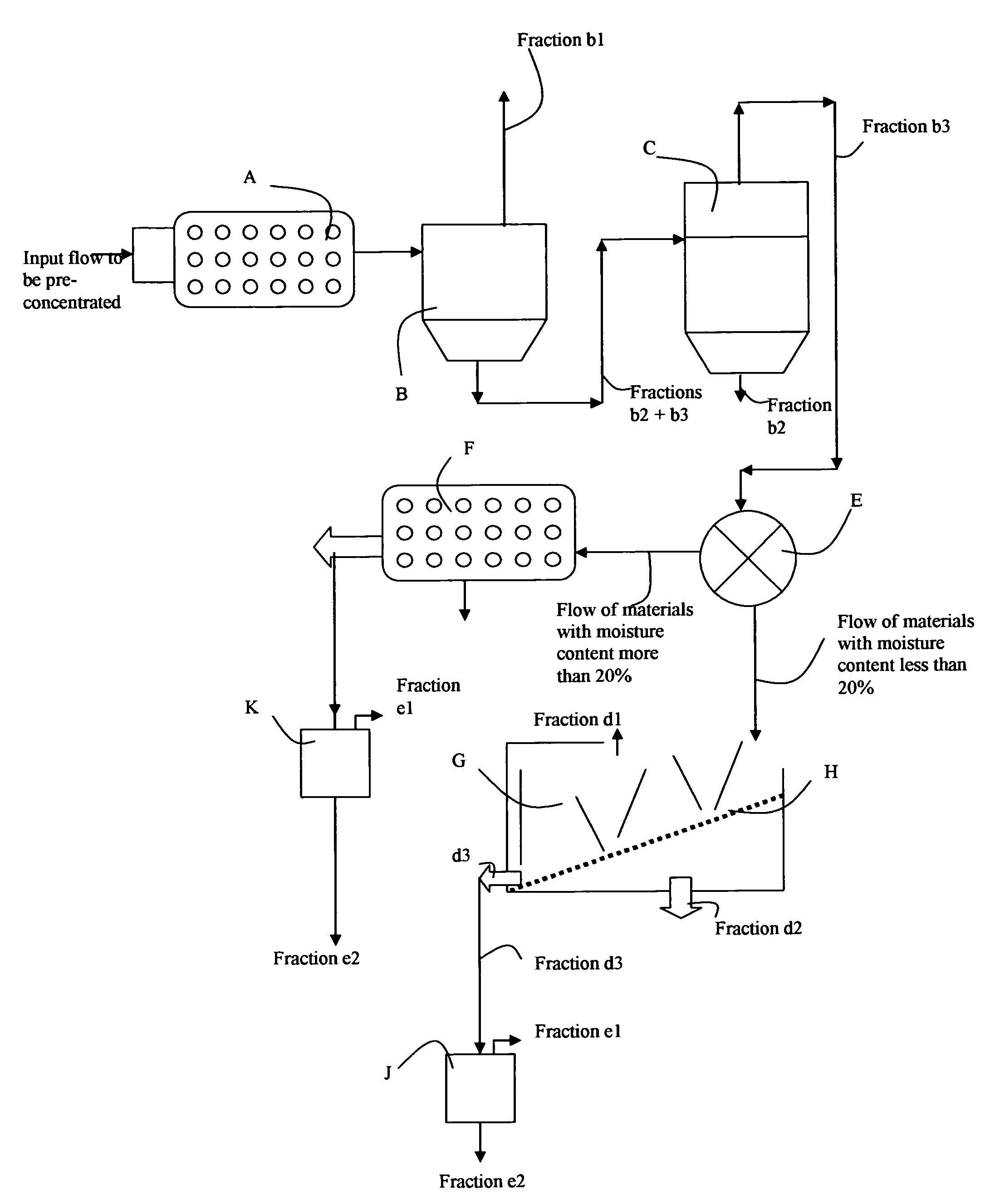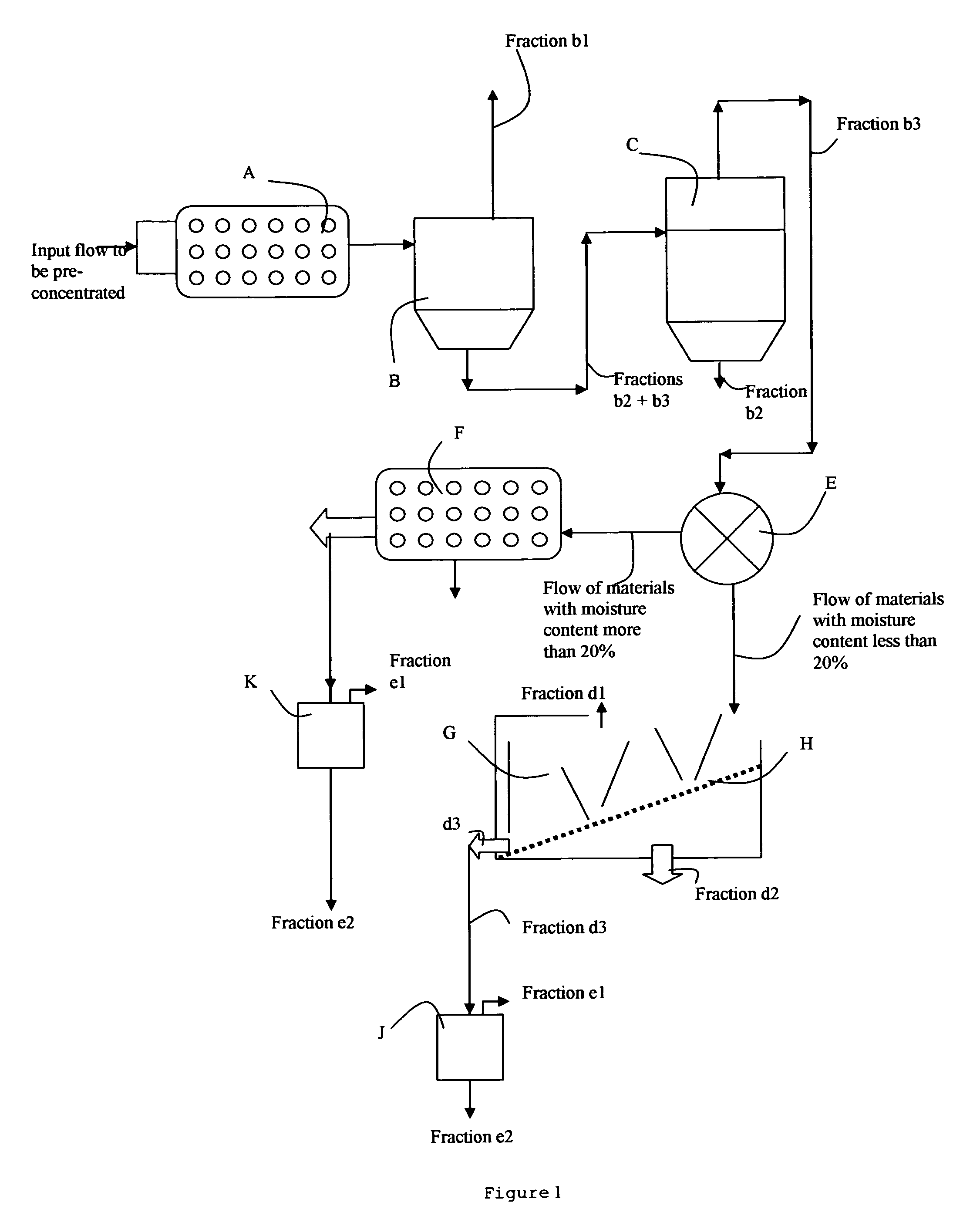Method for preconcentration of organic synthetic materials derived from shredding of end-of-life durable goods
a technology of durable goods and organic materials, applied in the field of methods, can solve the problems of only being efficient, expensive and unnecessary for reuse of the constituent materials of grinding residues, and pre-concentrating the fraction of synthetic polymer materials for reuse, so as to prevent the risk of explosion
- Summary
- Abstract
- Description
- Claims
- Application Information
AI Technical Summary
Benefits of technology
Problems solved by technology
Method used
Image
Examples
example 1
According to the Figure
[0121]A test was carried out on 23.4 tonnes of the lightweight flow (II) or > output from an automobile grinder. This > corresponds to material extracted by the first suction from the grinder and is the flow input into the pre-concentration process as described in the context of the invention.
[0122]According to step a) in the process according to the invention, the input flow of materials was subjected firstly to selective mechanical separation by screening and / or shape factor in (A) in order to take out 3.68 tonnes representing 15% by weight of the input flow. The screen mesh size was 0-4 mm.
[0123]According to step b) of the process, the material flow output from step a) was subjected to separation by aeraulic sort in a first aeraulic separator (B). 10.14 tonnes of “lightweight materials” forming fraction b1) were thus extracted by suction and 9.58 tonnes corresponding to fractions b2) and b3) remained and are considered as “heavy materials”, namely 43.3% of ...
example 2
According to the Figure
[0135]A treatment complying with the pre-concentration process according to the invention was made on 33.94 tonnes of a flow II of lightweight materials and on 19.96 tonnes of a flow I of heavy materials formed from a mix of non-ferrous metals and polymer materials.
[0136]The mix of the heavy materials flow I and the lightweight materials flow II represents 53.9 tonnes and forms the input flow to the pre-concentration process.
[0137]According to step a) of the process according to the invention, the input flow was firstly subjected to a selective mechanical separation by screening and / or shape factor in (A) in order to extract 8.6 tonnes of fines, which is 15.94%. The screen mesh size was 0-4 mm.
[0138]According to step b) in the process, the material flow output from step a), in other words 45.35 tonnes, was separated by aeraulic sort in a first aeraulic separator (B). 8.54 tonnes of a “lightweight materials” fraction b1 was thus extracted by suction and 36.76 t...
PUM
| Property | Measurement | Unit |
|---|---|---|
| weight | aaaaa | aaaaa |
| size | aaaaa | aaaaa |
| mass | aaaaa | aaaaa |
Abstract
Description
Claims
Application Information
 Login to View More
Login to View More - R&D
- Intellectual Property
- Life Sciences
- Materials
- Tech Scout
- Unparalleled Data Quality
- Higher Quality Content
- 60% Fewer Hallucinations
Browse by: Latest US Patents, China's latest patents, Technical Efficacy Thesaurus, Application Domain, Technology Topic, Popular Technical Reports.
© 2025 PatSnap. All rights reserved.Legal|Privacy policy|Modern Slavery Act Transparency Statement|Sitemap|About US| Contact US: help@patsnap.com


